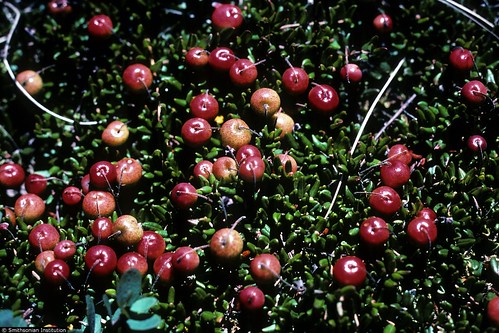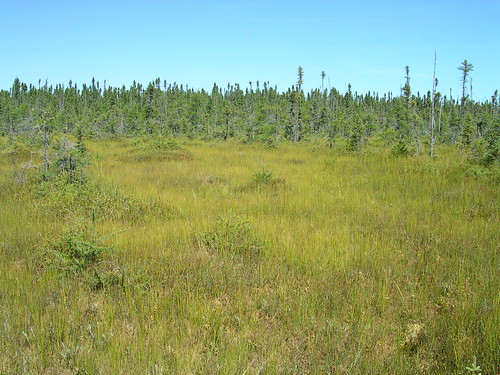As we celebrate the autumn season and as holidays approach, many of us will also be thinking of family gatherings and special menus which may include the colorful and healthy cranberry. Knowing some of the plant’s history may just help us enjoy this fruit even more.
Vaccinium oxycoccos L. or Small cranberry is widespread in boreal North America extending southward to California’s Cascade Range and to the Appalachian Mountains of West Virginia. It is a circumpolar boreal-montane species which means it is absent from the Canadian Arctic Archipelago.

Because this species extends over much geography and many countries it is known by numerous names. First the botanical names: Vaccinium is an ancient Latin name for bilberry with an obscure origin and oxycoccos is also an old Latin name for "acid-berry."
Here are a few examples of common names that I’ve come across:
- English - Mossberry
- French /Canada - Airelle canneberge
- German - Moosbeere
- Japanese - クランベリ or Kuranberii
- Russian – Клюква,
- Swedish - Tranbär
The name cranberry originates from North America’s German and Dutch pioneers who anointed them “crane berry" because they watched cranes feasting on the berries. These early settlers also noticed that the cranberry flower resembled a crane’s head.
Before European settlers came to the North American continent, native peoples had numerous names and many uses for cranberries. The Pequots of Massachusetts and the Lenin-Lanape tribe of New Jersey call them Ibimi or bitter berry. The Algonquins in Wisconsin referred to them as Atoqua and some of the Eastern tribes use the word Sassamanesh. Ojibwe in the Lakes States call them Mashkiigimin.

Small cranberry belongs to a group of evergreen dwarf shrubs or trailing vines in the genus Vaccinium subgenus Oxycoccos. In some treatments, it is the distinct genus Oxycoccos. Cranberry vines, thin and delicate, grow in acidic bogs throughout the cooler parts of the Northern Hemisphere.
Although highly edible, Small cranberry is not the species that has been commercially launched as a berry “super food.” That hyperbole belongs to V. macrocarpo or large cranberry. Perhaps we should dub this species American cranberry or North American cranberry or New World cranberry. Its native range is northeastern North America and thus it is not a circumpolar boreal-montane plant. If commercially purchased, this is the cranberry that we actually serve up for our holiday dinners. If however, we collected our holiday dinner cranberries from a local bog in the northern portions of our Great Lakes states we could be cooking up either – or both. What a yummy treat to enjoy!
To learn more about cranberries and sample some recipes, click here.
